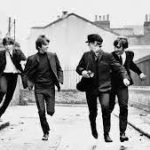Welcome to the first set of interviews. Three writers met with me (via email) and talked about many things. The interview will be posted every Monday for the next few weeks. I (Gillian Polack) am the interviewer, which largely meant throwing in a question and standing well back. The three writers (Amy Sterling Casil, Ron Collins and Michael Libling) are all pretty amazing, but I’ll let them speak for themselves. Let me throw the first of the questions in, to get them started.
Gillian Polack (henceforth, Gillian)
A stranger once asked me to tell them three things about myself. I’ve thought about this often since then, and have discovered that asking writers to tell me three things gives much more interesting replies than asking for a short life history.
1. If you had to explain what you write to that stranger, what would you tell them? (The stranger was French, if it helps.)
2. Imagine a game show (not Squid Game, a poor answer won’t kill you) where you have to describe your writing using five adjectives. The audience buzzes boring words, or predictable words. You don’t want to hear that buzzer. What are your five words?
3. What’s your favourite question about your work, the one you’re always happy for people to ask?
Ron Collins (Ron):
As Mike said in his answer to the first question, “Zut alors! Or, as we say in Quebec, “tabernac!” …Both of which roughly describe my feelings about the answers below…” I keep hearing ‘Tabernac!’ when I read these answers, but, as a response, it doesn’t fit them all. Read on…
1. What do you write?
Amy Sterling Casil (Amy): I’m a female science fiction writer and I now write stories featuring women, girls, and non-human creatures (animals, others, machine life). I also write factual books for children and teens. They’re often about medical, science, or tech topics. And, I write creative nonfiction online via the Medium service. It’s a different type of writing via online. Topics are current and the format is very different from traditional books or short fiction.
Michael Libling (Mike): Most likely, I would pretend I didn’t hear the question and move on to a topic with which I was more at ease. If forced to answer, however, I’d likely blather on like this…
I write stories about everyday life and everyday people, and then drop some freakish element into the mix, which tends to lay waste to the “everyday.” In terms of specifics, I try to avoid the obvious in my pursuit of the “freakish,” thus avoiding vampires, zombies, ghosts, wizards, dragons, and the like. The more unassuming the menace, the more frightening it is to me.
Some editors have told me I write mainstream fiction with a genre sensibility, while others insist my writing is genre fiction with a mainstream sensibility. One long-ago, former agent of mine lamented the fact my work was neither literary nor genre, which made his job too difficult. The way I see it, my fiction tends to cross categories, blending any number of the following at any given time: mainstream, fantasy, horror, mystery, thriller, and science fiction. If there is a unifying factor in my work, it would be the recurrent strains of dark humour.
My upcoming novel (Autumn 2023 from WordFire Press), THE SERIAL KILLER’S SON TAKES A WIFE, was described by one reader as “a breezy spin on horrible things.” Looking back, I think this same description could apply to most of my work.
Ron:
I used to say that I write speculative fiction, and just left it at that.
Unfortunately, or fortunately I suppose, that’s not really true now. I’ve written twenty or so novels, and nearly 200 short stories, and when I look at them, I see the fact is that I write across pretty much every genre. I’ll chuckle at myself here and admit that I was tempted to end that sentence with “except horror,” but then had to chastise myself because I’ve done several things with at least some elements of horror in them. Bad writer!
Here’s the thing, though. I’ve come to the conclusion that I don’t like the default feeling of talking about genre anymore. Yes, I still focus on speculative fiction—science fiction and fantasy and things that go in strange directions—but the reality is that I love story, and that’s what I’m trying to do. Tell stories—hopefully stories that matter to me, filled with characters I can relate to.
I can’t control how people react to those stories, of course. The world is full of opininated people, and I can’t please them all. But these days I figure that if I tell stories that matter to me, I’ll be speaking to an audience that will care about them, too. And if someone doesn’t find them relevant, well, that’s fine. They just aren’t my audience.
So, what matters to me?
That, unfortunately, you’ll need to read some of my work to decide.
2. What are your five words?
Amy:
Emotional, easy-to-read, eclectic, exciting, and electric
Ron: Hmmm. I think I’m going to get buzzed.
Honestly, I don’t know. I sit down, and whatever comes out comes out. Last week, for example, I went to the writing desk totally intent on writing a science fiction story for a publication I often contribute to, but my brain wouldn’t do that. Instead, it wanted to work on a psychological thriller of a short story that bordered on, yes, horror.
That said, I’m a while male of a certain age, so I’m sure that comes out in ways I couldn’t even begin to describe. To generalize, I guess … hmmm … well, let me at least try to answer the question.
· Hopeful.
· Honest
· Wide-ranging
· Entertaining.
· Compassionate
See what I mean? I’m totally getting buzzed.
Mike: With apologies to Amy for my failure to emulate her alliterative triumph.
Off-the-wall.
Menacing.
Digressive.
Wistful.
Unpredictable.
3. What’s your favourite question about your work, the one you’re always happy for people to ask?
Amy:
What inspired you to write story ________________ [or essay/article ____________]?
Ron:
“I love your work, can I give you a check?”
(grin)
Seriously, in this world where attention spans can be measured in picoseconds, I’m just happy for any attention my writing gets at all. It’s nice when people have read something of mine and ask about where it came from, and it’s nice when people ask where they can get my work—though I admit that since I am so all over the place (and write that way under my one and only name) I often wonder if I send people the right direction.
Most of my email questions seem to center around when the next book in my SF series is coming out, which is good news/bad news since I’ve done a mini-Martin and had a gap. The good news, though, is that the wait is over and the series is back in production.
That’s a problem with being an independent publisher, though. There’s only just me, so when life happens, if I can’t get my feet to the pedals for a period of time, everything grinds to a halt.
Mike:
Every writer likes to hear, “Where can I buy a copy?” But I also enjoy when a reader asks me, “Did this actually happen? Is that real?” Since much of my writing is grounded in reality and often strays into the autobiographical, I get this a lot. Likewise, I prefer to leave the answer to the question as ambiguous as possible, leading to further speculation.
Gillian:
Three questions is enough for one week! Next week there will be more questions, more answers… and some picture.

 I love learning how to do stuff. When I was a kid I had weaving lessons the way that my peers had piano or violin lessons. I taught myself to sew when I was a teenager. Taught myself to knit. And when I see a recipe for something I’ve never made — particularly if it’s a fairly basic thing (like cheese) or a really complex thing (baklava! beef Wellington!) my thumbs start twitching. It’s not that I need home made cheese — I’m pretty much the only cheese eater in my house — but the urge to know
I love learning how to do stuff. When I was a kid I had weaving lessons the way that my peers had piano or violin lessons. I taught myself to sew when I was a teenager. Taught myself to knit. And when I see a recipe for something I’ve never made — particularly if it’s a fairly basic thing (like cheese) or a really complex thing (baklava! beef Wellington!) my thumbs start twitching. It’s not that I need home made cheese — I’m pretty much the only cheese eater in my house — but the urge to know

 In 1990, when I was 4+ months pregnant with my older daughter, my husband and I went to Disney World. Our reasoning was that this might be our last opportunity to act like the irresponsible kids we were (even in our 30s) rather than the responsible parental figures we were about to become. This showed how much we knew about parenthood, but it was still a good trip. While we were there, we learned that there was going to be a shuttle launch from the Kennedy Space Center at Oh-God-Too-Early AM the next day, and immediately decided we had to drive there from Orlando and see the launch.
In 1990, when I was 4+ months pregnant with my older daughter, my husband and I went to Disney World. Our reasoning was that this might be our last opportunity to act like the irresponsible kids we were (even in our 30s) rather than the responsible parental figures we were about to become. This showed how much we knew about parenthood, but it was still a good trip. While we were there, we learned that there was going to be a shuttle launch from the Kennedy Space Center at Oh-God-Too-Early AM the next day, and immediately decided we had to drive there from Orlando and see the launch. I was ten when A Hard Day’s Night came out. It played for about a year at the Village Cinema, four blocks from my house in Greenwich Village. The Village Cinema was a little art house, and while my mother was not against dropping the kids at the movies (I was 10, my brother was 8) especially during the summer when it was hot and there was air conditioning, she preferred to do it at the Waverly or the Loews Sheraton (both larger, with a larger, more supervisory staff to make sure we wouldn’t be spirited away). I think she found the Village Cinema–what was called an “art house” in those days, a little skeevy. In any case, neither my mother nor my father was enthused by the idea of taking us themselves and spending two hours watching what they anticipated would be a standard teen-pop-star movie.
I was ten when A Hard Day’s Night came out. It played for about a year at the Village Cinema, four blocks from my house in Greenwich Village. The Village Cinema was a little art house, and while my mother was not against dropping the kids at the movies (I was 10, my brother was 8) especially during the summer when it was hot and there was air conditioning, she preferred to do it at the Waverly or the Loews Sheraton (both larger, with a larger, more supervisory staff to make sure we wouldn’t be spirited away). I think she found the Village Cinema–what was called an “art house” in those days, a little skeevy. In any case, neither my mother nor my father was enthused by the idea of taking us themselves and spending two hours watching what they anticipated would be a standard teen-pop-star movie. Jupiter and Saturn, but Voyager 2 continued on to Uranus and Neptune. They’re both now outside the solar system, sending back data about the regions of space they’re exploring.
Jupiter and Saturn, but Voyager 2 continued on to Uranus and Neptune. They’re both now outside the solar system, sending back data about the regions of space they’re exploring.